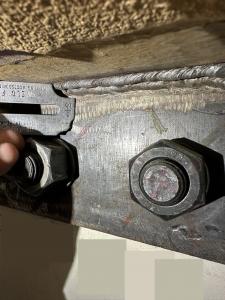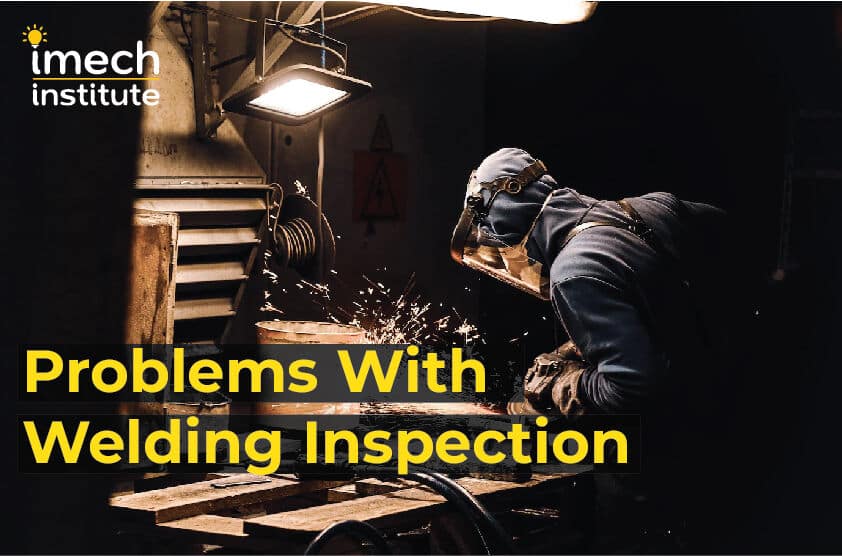The Duty of Welding Inspection Racine in Stopping Structural Failings
Wiki Article
Cutting-edge Strategies to Fillet Weld Examination and Testing: Enhancing Weld Top Quality and Compliance Standards
In the realm of welding, the quality and integrity of fillet welds play a critical function in ensuring the architectural stability and dependability of different industrial elements. With the consistent drive for improved efficiency and conformity with rigid requirements, the exploration of innovative approaches to fillet weld evaluation and screening has actually come to be critical. As industries evolve, the conventional techniques might no more be enough in satisfying the needs of modern-day welding applications. By embracing cutting-edge innovations and methodologies, a brand-new horizon of opportunities arises in the world of weld top quality analysis and adherence to compliance criteria.Advanced Non-Destructive Testing Techniques
Utilizing cutting edge innovations, progressed non-destructive screening methods play an important role in guaranteeing the integrity and high quality of fillet welds. These techniques, such as phased variety ultrasonic testing (PAUT) and magnetic fragment testing (MPT), offer thorough insights right into the weld's inner framework without triggering any type of damages to the material. PAUT, as an example, makes use of several ultrasonic elements to evaluate the weld from different angles, supplying an extensive visualization of possible problems like absence of fusion or fractures.By using these sophisticated non-destructive screening strategies, weld inspectors can properly assess the top quality of fillet welds, ensuring compliance with industry requirements and laws. The ability to discover defects early on not just enhances weld high quality however also protects against pricey rework or failings in structural honesty, underscoring the relevance of these ingenious testing strategies in welding examinations.
Robotics and Automation in Inspection
The combination of robotics and automation has reinvented the inspection process for fillet welds, improving performance and precision in top quality analysis. Robotics provide specific control and repeatability in inspecting welds, making certain reliable and constant results. Automated systems can be configured to comply with details inspection courses, making certain comprehensive protection of welds and decreasing the risk of human error.Robotic examination systems furnished with advanced sensing units can detect and gauge weld attributes with high accuracy, supplying thorough data for evaluation. These systems can determine problems such as fractures, lack of combination, and porosity, enabling prompt restorative actions to be taken. Additionally, robotics and automation permit real-time information collection and analysis, providing instant responses to operators and promoting fast decision-making procedures.
Additionally, using robotics and automation in fillet weld inspection improves overall efficiency by minimizing evaluation times and raising inspection throughput. By simplifying the assessment procedure, suppliers can ensure weld quality and conformity criteria are fulfilled effectively, eventually leading to cost financial savings and boosted item top quality.
Using Artificial Intelligence for Analysis
Synthetic intelligence plays a critical duty in enhancing the performance and precision of evaluation in fillet weld inspection procedures. AI formulas can quickly refine vast quantities of data from weld inspections, spotting issues or incongruities that might be challenging to identify with the naked eye - Welding Inspection Racine.Moreover, AI systems can learn from past evaluation data, continually enhancing their capability to recognize potential defects and deviations in fillet welds. This adaptive knowing ability improves the general high quality control procedure, reducing the possibility of human mistake and ensuring that welds fulfill the needed criteria. By incorporating fabricated intelligence into fillet weld evaluation, sectors can attain greater levels of effectiveness, uniformity, and conformity in their inspection practices.
Portable Devices for On-Site Examination
 Enhancing area inspection effectiveness, the adoption of portable tools reinvents on-site assessment procedures for fillet welds. These devices provide flexibility and benefit, allowing inspectors to carry out extensive examinations in numerous places, including remote or difficult atmospheres. Portable devices such as ultrasonic testing tools, magnetic fragment assessment tools, and electronic radiography systems check my blog provide real-time data and high-resolution imaging capabilities, enabling quick decision-making and instant comments on weld high quality.
Enhancing area inspection effectiveness, the adoption of portable tools reinvents on-site assessment procedures for fillet welds. These devices provide flexibility and benefit, allowing inspectors to carry out extensive examinations in numerous places, including remote or difficult atmospheres. Portable devices such as ultrasonic testing tools, magnetic fragment assessment tools, and electronic radiography systems check my blog provide real-time data and high-resolution imaging capabilities, enabling quick decision-making and instant comments on weld high quality.One substantial advantage of portable tools is their ability to streamline evaluation treatments, reducing downtime and enhancing overall productivity. Examiners can conveniently carry these devices to different job sites, eliminating the need for carrying heavy machinery or components to off-site facilities. Additionally, the mobility of these devices advertises cost-effectiveness by decreasing transport costs and speeding up assessment timelines.
Furthermore, the use of mobile devices for on-site evaluation promotes proactive quality assurance actions, as inspectors can immediately identify and deal with any type of potential welding problems or discrepancies. By incorporating these ingenious modern technologies into on-site examination methods, welding professionals can ensure conformity with market standards and improve weld high quality, inevitably resulting in boosted structural stability and safety and security in different welding applications.
Assimilation of Data Monitoring Systems
Having actually maximized on-site examination procedures via the application of portable devices, the following phase entails the smooth combination of data monitoring systems to additionally enhance effectiveness and data evaluation abilities in fillet weld examination and testing. Welding Inspection Racine. By integrating information administration systems into the assessment process, companies can improve information collection, storage space, and evaluation. This assimilation enables for real-time surveillance of weld high quality, prompt identification of issues, and punctual decision-making to fix any issues that may arise throughout the inspection process
Data management systems play a vital duty in systematizing assessment information, helping with simple gain access to for accredited personnel, and making certain data honesty and security. Through the assimilation of these systems, assessors can create detailed records, track historic data for pattern analysis, and boost overall process effectiveness. The integration of information monitoring systems makes it possible for smooth interaction between different stakeholders entailed in the inspection process, promoting partnership and enhancing general top quality control measures. Ultimately, the integration of data administration systems serves to elevate the standards of fillet weld assessment and testing, making certain compliance with industry laws and enhancing weld quality.
Verdict
In verdict, cutting-edge strategies try this out to fillet weld examination and screening have actually significantly improved weld high quality and conformity requirements. Advanced non-destructive testing approaches, robotics, automation, expert system, mobile tools, and data administration systems have actually changed the way weld inspections are performed. By utilizing these modern technologies, industries can ensure that welds satisfy the required high quality requirements and policies, eventually boosting total effectiveness and security in welding processes.
By using these advanced non-destructive screening methods, weld examiners can precisely assess the Learn More quality of fillet welds, making sure conformity with sector criteria and policies. Mobile devices such as ultrasonic testing tools, magnetic fragment examination devices, and electronic radiography systems supply real-time data and high-resolution imaging capacities, enabling fast decision-making and prompt responses on weld quality.
Having actually enhanced on-site inspection processes via the usage of mobile tools, the following stage includes the seamless assimilation of information monitoring systems to even more improve performance and information analysis abilities in fillet weld inspection and screening (Welding Inspection Racine). Inevitably, the combination of data administration systems serves to elevate the requirements of fillet weld evaluation and screening, guaranteeing compliance with sector regulations and enhancing weld high quality
 In conclusion, cutting-edge strategies to fillet weld inspection and testing have considerably boosted weld top quality and compliance requirements.
In conclusion, cutting-edge strategies to fillet weld inspection and testing have considerably boosted weld top quality and compliance requirements.Report this wiki page